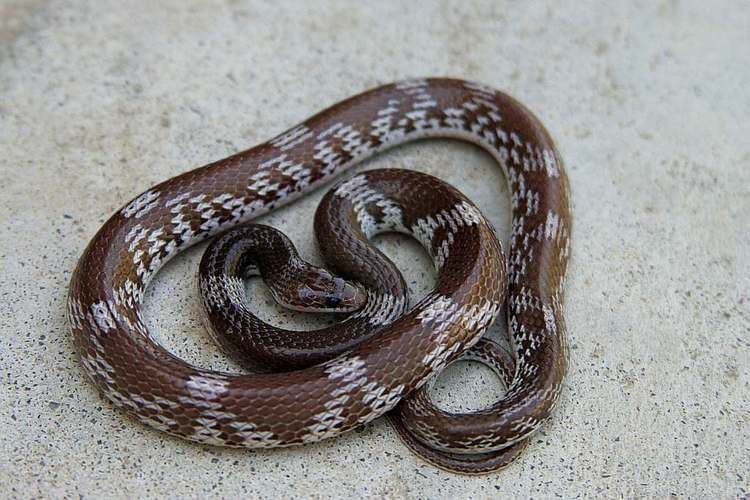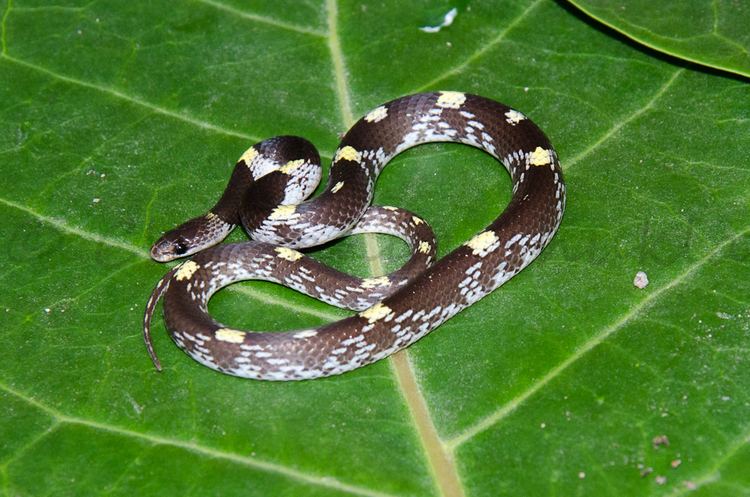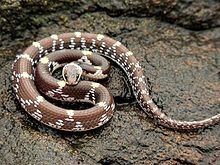Class Reptilia Suborder Serpentes | Phylum Chordata Rank Species | |
 | ||
Similar Lycodon, Oligodon taeniolatus, Lycodon capucinus, Lycodon travancoricus, Lycodon flavomaculatus | ||
Lycodon striatus, commonly known as the northern wolf snake or the barred wolf snake, is a species of nonvenomous colubrid snake from southern Asia.
Contents

Geographical range

Lycodon striatus is found in Afghanistan, India (Andhra Pradesh, Gujarat, Karnataka, Madhya Pradesh, Maharashtra, Punjab and Uttar Pradesh), eastern and north-eastern Iran, Nepal, Pakistan, Sri Lanka, western Tajikistan, southern Turkmenistan (Kopet Dagh) and Uzbekistan.
Description

Lycodon striatus is dark brown or black above, with white transverse spots or crossbands, which are widely separated anteriorly. The sides are lineolated with white, with a black spot corresponding to each white crossband. The upper lip and ventrum are uniform white (coloration in alcohol). The longest adult known to George Albert Boulenger in 1893 was 43 centimetres (17 in) in total length, with a tail 7.5 cm (3.0 in) long.

The head is only slightly distinct from the neck, and the snout is flattened. There are 8 upper labials, the first and second contacting the nasal scale.
Taxonomy
Lycodon striatus was first described in 1802 by George Shaw, as Coluber striatus; its type locality was "Vizagapatam and Hyderabad". Three subspecies are recognised, including the nominate race:
Ecology
Lycodon striatus prefers dry regions such as semideserts and forest edges. Snakes of this species are nocturnal. By day they hide under stones, but after dark they emerge to hunt. Lycodon striatus feeds on skinks, geckos and other small lizards.
Reproduction
Adult females lay eggs in April (in India). Clutch size is small, at only 2–4 eggs, and the egg size is relatively large – 25–30 millimetres (1.0–1.2 in) long by 9–12 mm (0.35–0.47 in) wide. Parental care of the eggs has been observed.
